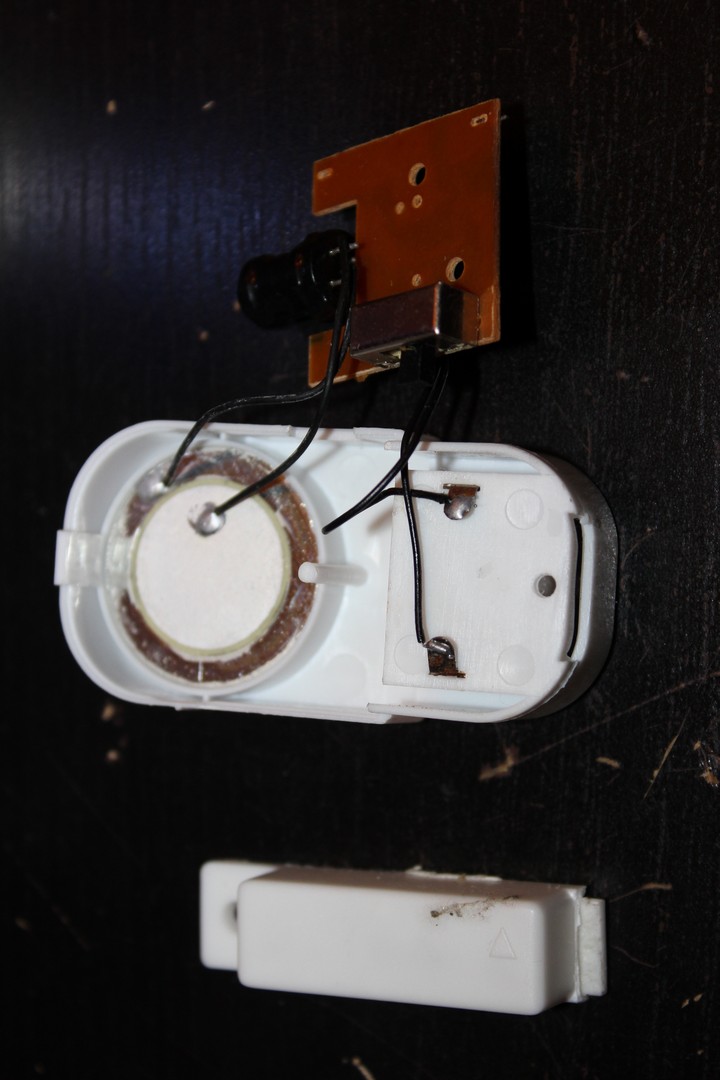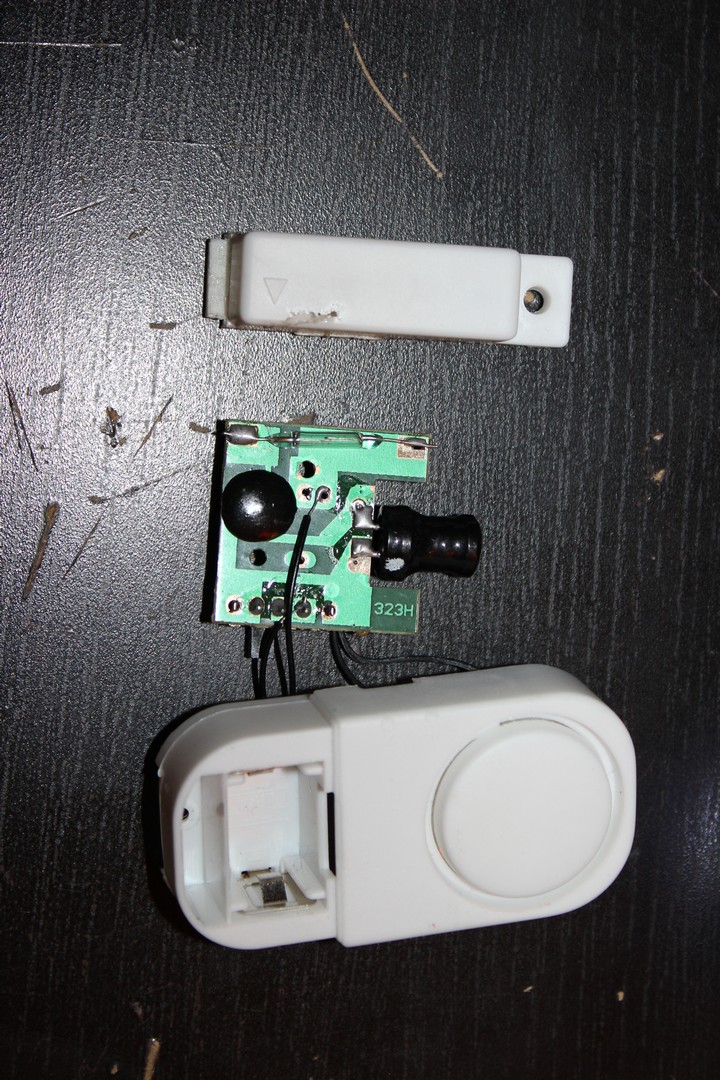Audio/visual alarms and deterrence
-
So I was thinking that the ultimate goal for a lot of us would be some sort of DIY home security solution. And for that you need some sort of (realistic) deterrence. Something that works and is both affordable and accessible (Ebay/Ali etc).
And I don't just mean what can be powered from 5V/1A or whatever but 12-24V and beyond. Whatever it takes to provide a proper deterrence. Many of the sirens I've looked at seem to be of questionable quality. Youtube reviews indicate that the motors (when applicable) are crap and overheat and they probably don't live up to the dB specification (what a shocker). Having an all-in-one sound/light deterrence would also be pretty handy.
Any pointers? Personal experiences?
-
I'm also interested by this point of home security... I'm making my own "mysensors" with custom casing (3Dprinting, silicone mold, resin,...) wallplugs, capacitive buttons, 4 in 1 motion/temp/humidity/luminosity sensor, external meteo sensors,... And, for my home security, a keyboard/RFID sensors but I need a solution of deterrence. Did you already find some sirens from ebay or amazon that can make the deterrence?
-
I'm also interested by this point of home security... I'm making my own "mysensors" with custom casing (3Dprinting, silicone mold, resin,...) wallplugs, capacitive buttons, 4 in 1 motion/temp/humidity/luminosity sensor, external meteo sensors,... And, for my home security, a keyboard/RFID sensors but I need a solution of deterrence. Did you already find some sirens from ebay or amazon that can make the deterrence?
@Tibus No I'm still at the "googling" stage. Reading reviews and looking through different alternatives on Ebay/Ali. I thought that some here may have personal experience from sirens/strobes, particularly since many here have a great deal of previous experience from home automation and Z-Wave in particular. Someone may know what to expect and what to look for and may in fact have a commercial Z-Wave siren for comparison. It also seems clear that most solutions would have to be started using a relay as such you could just as well use 230V models or whatever if that isn't too expensive. it also seems clear that most of the combined sirens/strobes on Ebay have very poor strobe effect.
I'm intrigued, by "resin" do you mean you will cast the pcb in some sort of substance, spray or glue, to protect it against wear and the elements? Cause I was just thinking the other week that we need a big thread about best practices for weather and moisture protection.
-
no, i've no plan to protect my pcb for weather and moisture... I didn't really think about it... I should... the resin will help me to get better enclosure for my sensors... I'm planning to print in 3D some beautiful sensor I made, make my own pcb, the tyniest possible to get realy small sensors (with atmega328TQfP,...) and make some silicon mold to get the enclosure in reasin instead of 3D printing plastic... Like i'm planning to make some wallplug sensors, wallplug sirens and relay,... I can't use 3D printing enclosure so the resin is the best choice if you don't want to use plastic injection,... (and it's cheaper too)
-
Why not hook up a window siren alarm to the arduino? They are extremely loud, and only cost $1. That combined with some LEDS on every sensor node would work wonders. 10+ alarms all around the house with blinking lights should stop someone.
-
I but them from my local $1 store, but I was able to find some that look the same on amazon.
http://www.amazon.com/Wireless-Doors-Windows-Security-System/dp/B0083QY1TY/ref=sr_1_8?ie=UTF8&qid=1413136292&sr=8-8&keywords=window+alarm.It is a simple circuit with a reed sensor to trip the alarm.
give me a second to upload a picture of one open.
-
It uses a magnet to know when the reed switch is set off to complete the circuit, I was buying them to use the reed switches for door sensors which waiting for a shipment from China.
@Rek I see. I was looking for something with a bit more punch. But I do like the idea of the entire sensor network being triggered and each node having its own small way of contributing (and that could easily run on batteries for a few minutes at a time anyway) which would all add up to a deafening cacophony. In fact it's brilliant. The only problem I see is that for the gateway to communicate with nodes turning things on, they would have to be awake, which is probably not the case (saving battery and all that).
Still doing my homework on the topic. I've thought of triggering a 12V siren (electrical or mechanical) and it seems most would use a TIP120 transistor with some added protection.
-
Each one of these little sirens produce a ear piercing sound, enough that it hurts your ears, I hooked one up to an arduino and triggered it with a simple on off sketch. Figuring out the broadcast would be the next part.
@Rek Hmmm. Seems like electronic sirens / buzzers are the way to go then, at least indoors. As opposed to the mechanical / pneumatic ones that I've also looked at. Seems a bit unnecessary with the sometimes massive current draw on spin-up on some of these engines, plus the engines themselves leave a lot to be desired.
-
I but them from my local $1 store, but I was able to find some that look the same on amazon.
http://www.amazon.com/Wireless-Doors-Windows-Security-System/dp/B0083QY1TY/ref=sr_1_8?ie=UTF8&qid=1413136292&sr=8-8&keywords=window+alarm.It is a simple circuit with a reed sensor to trip the alarm.
give me a second to upload a picture of one open.
@Rek Thanks, with that help I found them on the dollar tree website.
The picture is helpful. I assume the blob produces the oscillation when triggered by the reed switch. The silver rectangle is a power switch I think (I barely see the lever), but what is the black almost-cylinder?How do you power and trigger these (ie: what's your hacked version like?). I could picture powering it from the uC supply (Vraw?) and using a uC pin to trigger the pad normally shorted via reed switch (ie: using the onboard oscillator and driver), or I could imagine you just using the audio transducer and generating your own oscillator via a uC pin - depending on the current needed.
-
I believe the big black cylinder is an inducer to make the siren pitch go up and down without completely dropping out. If you look above the black blob and under the cylinder there is an extra through hole which is perfect for triggering. FYI I bought these from Dollar tree. Ill try and see if I can take a few pictures or a video of it in action.
-
So I was thinking that the ultimate goal for a lot of us would be some sort of DIY home security solution. And for that you need some sort of (realistic) deterrence. Something that works and is both affordable and accessible (Ebay/Ali etc).
And I don't just mean what can be powered from 5V/1A or whatever but 12-24V and beyond. Whatever it takes to provide a proper deterrence. Many of the sirens I've looked at seem to be of questionable quality. Youtube reviews indicate that the motors (when applicable) are crap and overheat and they probably don't live up to the dB specification (what a shocker). Having an all-in-one sound/light deterrence would also be pretty handy.
Any pointers? Personal experiences?
-
@bjornhallberg did you consider using a smoke detector?
Chain some together throughout the house and I for sure would start running!@Yveaux Not a bad idea! Especially if we start "mysensoring" smoke detectors (or build our own). It'd be great to have a two-in-one solution there. Same alarm for different purposes.
-
I have some FirstAlert OneLink smoke detectors; they network together at 433 MHz. Each gets a room type (selected from a fixed menu of a dozen: Kitchen, Utility Room, Master Bedroom...); the audio for speaking the names is in the ROM. If one goes off, they all go off and announce loudly - "Alert Alert Evacuate Immediately - Smoke in the Utility Room" (along with beeps). Runs on 2xAA. It's a good idea but...
Something more customizable would be good. Last week it woke us at 3am to let us know that the battery in one of the remote rooms needed replacing - same loud alarm and voice as a fire being announced throughout the house and waking everybody up. Also the selection of room names doesn't always fit - we have to remember that we called the office a "utillity room" during setup because they don't have all the room names to match our house. (I did at least write the names on the outside of the units so I can sort it out by getting close to each unit in turn, without going into config mode to have it repeat its own name).
It would be nice if the "outdoor voice" was reserved for real alarms, and battery warnings arrived by email, or in a softer voice and during the daytime only, or whatever. So a customizable and interfaceable [not real words but they should be] version of this system would be good.
I do not know how hard it would be to hack a conventional smoke alarm. For safety I would probably want to keep the direct alarm connected (no un-alarmed fires due to software bugs). But one could perhaps add the ability to also trigger the buzzer in firmware as suggested above (eg: for intrusion alarms, or to relay a smoke alarm as the OneLink does), and to pass on a locally detected alarm to the system (for relaying or for announcing in other ways).
Duplicating the OneLink functionality would also require a loud but tiny speaker in each unit, with locally stored voice announcements.


